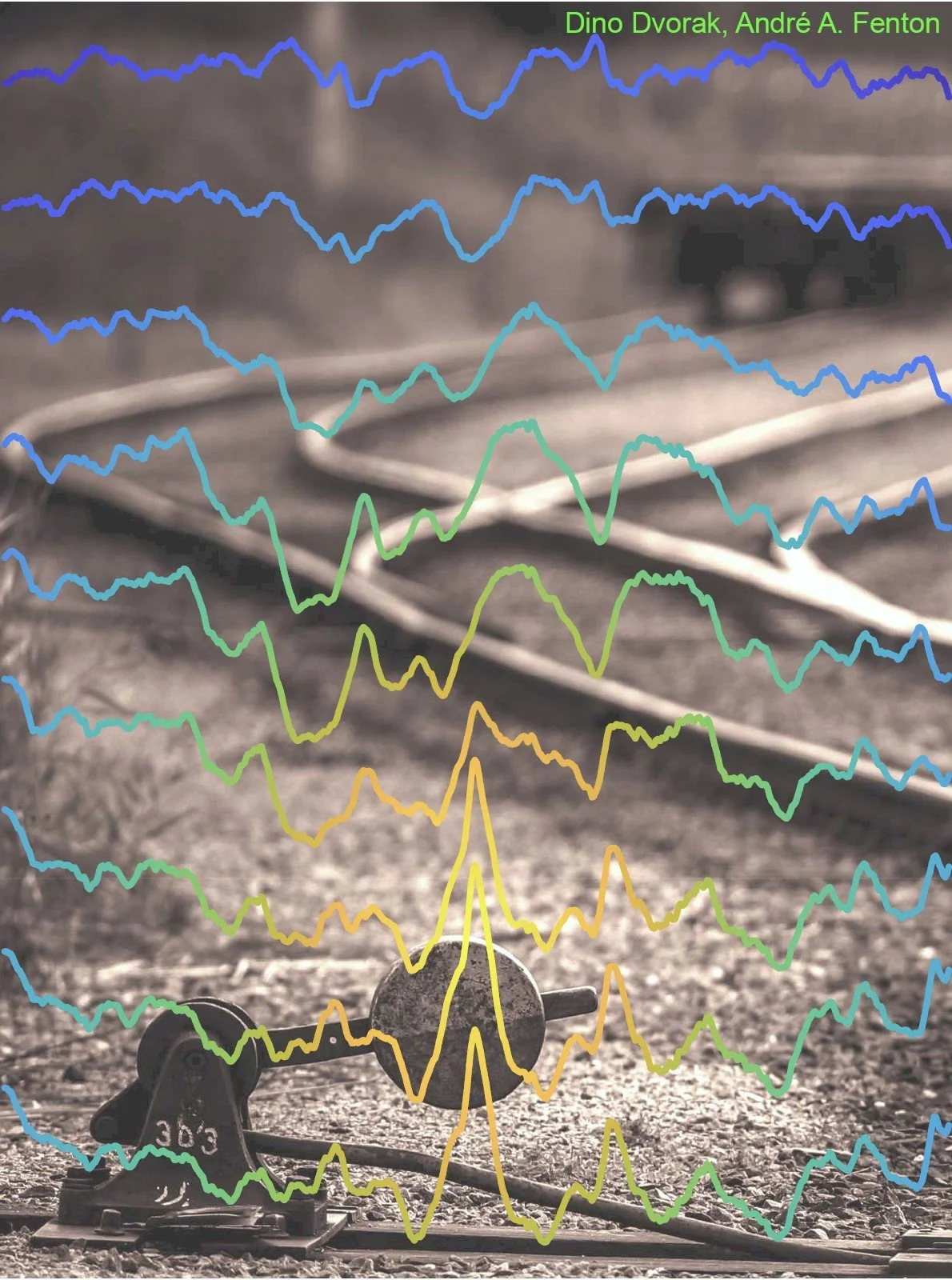Dentate Spikes Control: Dino’s Latest
Dentate spikes and external control of hippocampal function
The current zeitgeist in neuroscience is to identify functionally-specialized neural circuits – one circuit for each function. However, there are just too many functions for each to have a specialized circuit. When the same circuit performs more than one function, synergistic, creative and economic interactions become possible. Consider memory.
Memory requires an information processing circuit for encoding information, as well as an information processing circuit for recollecting that information; overlapping sets of hippocampal neurons participate in both processes. We investigated how the mouse hippocampus switches from encoding the current location to recollecting a remote location. What controls this neural competition? Is it merely a stochastic consequence of intrinsic hippocampal activity, or is there an external control signal, like a railway switch that diverts a train from one track to another?
Dino previously reported that when slow 30-Hz oscillations in hippocampus CA1 dominate mid-frequency 70-Hz oscillations, the hippocampus transiently switches from encoding to recollection.
In Dino’s latest paper, this slow-gamma dominance (SGdom) is promoted by a medial entorhinal cortex-originating event called a dentate spike (DSM). DSM events coordinate oscillatory activity across the dentate gyrus→CA3→CA1 circuitry and in each area, coincides with activation of principal and inhibitory cell action potential discharge and the neural cofiring that increases CA3 slow-gamma output to CA1 and suppresses entorhinal mid-frequency input to CA1. These findings show that the SGdom events that transiently switch the hippocampus to recollect information and a non-local mode of hippocampal information processing, are under the control of the medial entorhinal cortex via the mechanism of DSM.
The DSM-mediated diversion preferentially loads the hippocampus information processing with contextual information from the lateral entorhinal cortex just as it switches from encoding to recollection, pointing to how recollections can be contextually appropriate and content-specific. The set of findings show that DSM events act like a railway switch that diverts trains of neural activity from the information processing stream that encodes experience to the information processing stream that recollects contextually-appropriate information from memory.
This image superimposes hippocampal local field potentials on railway tracks controlled by a switch that is overlaid by a dentate spike colored yellow. Railway tracks provide different pathways to distinct destinations, like different hippocampal information processing modes can enable distinctive memory encoding and recollection information processing functions. Externally-controlled railway switches control each train’s destination, whereas prominent medial-entorhinal cortex-originating dentate spikes transiently switch hippocampus information processing from encoding to recollection, like a railway switch diverts a train, this dentate spike event diverts thoughts from the present to the past.
